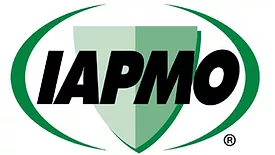Home » IAPMO
Articles Tagged with ''IAPMO''
The deadline to submit an application is Jan. 30, 2026.
Read More
Pacific Institute report recommends IAPMO’s Water Demand Calculator as a key strategy for national water efficiency
The nonpartisan research organization featured IAPMO's Water Demand Calculator in a landmark report.
November 5, 2025
IAPMO celebrates 10 years of WorldSkills Global Industry Partnership
The two companies are celebrating 10 years as partners.
October 17, 2025
IAPMO elects Stettler President, advances 2027 uniform codes at 2025 Annual Education and Business Conference
IAPMO’s 2025 Education and Business Conference brought together plumbing and mechanical professionals.
September 23, 2025
Continuing Education, brought to you by PM Code Corner
Continuing education: Designing right-sized plumbing systems for housing affordability, water efficiency and public health
Creating spaces that are safe, welcoming and healthy for all occupants.
September 11, 2025
SkillsUSA selects Connecticut plumbing apprentice for 2026 WorldSkills Competition, backed by industry-wide support
PHCC Educational Foundation, UA, IAPMO teaming up to train Charles Goede for the prestigious international event in Shanghai.
September 10, 2025
IAPMO, ASPE, ASSE International, ARCSA International join into renewed MoU outlining future collaboration
The groups announced their intent to renew a Memorandum of Understanding.
September 2, 2025
IAPMO supports APEC workshop in South Korea on safe drinking water
IAPMO helps lead development of international roadmap to improve drinking water safety across APEC economies.
August 1, 2025
Radiant Comfort Report Spring 2025 Edition
Best Practices for performance, comfort and longevity
Mastering radiant installation
July 23, 2025
Radiant Comfort Report Spring 2025 Edition
Radiant Professionals Alliance educating the industry
Resources and new technologies to stay up-to-date on radiant & hydronics.
July 18, 2025
Keep your content unclogged with our newsletters!
Stay in the know on the latest plumbing & piping industry trends.
JOIN TODAY!Copyright ©2025. All Rights Reserved BNP Media.
Design, CMS, Hosting & Web Development :: ePublishing









